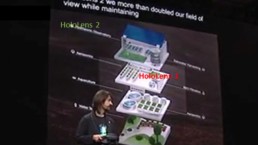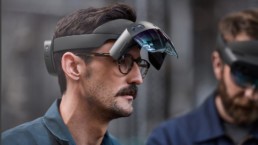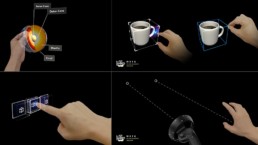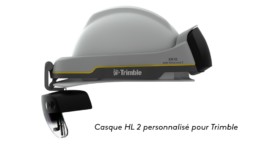1 June 2020
With Hololens 2, mixed reality is finally ready for industrial deployment
There is something new in the world of mixed reality! After several years of waiting, Microsoft has finally unveiled its Hololens 2 headset at the Mobile World Congress in Barcelona. The first testimonials live from the show are very positive. Hololens 2 was improved in every way compared to the first version. Improvements can be summarized in 4 points:
A screen twice the size
Screen size was the main criticism of Hololens. Microsoft heard it and doubled its size. In fact, the field of vision is now 52 ° with a 3: 2 aspect ratio . The display quality remains the same despite this doubled size, with a resolution of 2K per eye . The screens are also brighter than before, allowing use even in bright light.
Much more comfortable
The comfort of the headset has been revised upwards. The first Hololens weighed a bit forward and was not always very easy to put on. The new model is put on your head like a baseball cap . Just tighten a thumbwheel on the back to hold it in place. It is better balanced because the battery and the processor are at the back, and its weight is therefore less noticeable. Moreover, we can raise the visor up if necessary, without having to remove it and put it back again and again. Finally, the foams in contact with the head can be washed for better hygiene.
Simple and natural interactions
No more “clicks in the air”, Hololens 2 incorporates a full recognition of gestures. We can now interact directly with holograms, grab them to move them, resize them, but also press virtual buttons. The voice recognition is also much better and even works in a noisy environment thanks to new directional mics. And one eye-tracking system allows to control the interface with its gaze, without moving his head.
The cloud as a back-up
The computing power of Hololens 2 is provided by a Qualcomm Snapdragon 850 processor. It replaces the Intel chip of the first model. If the new headset is obviously more powerful, it remains limited compared to a computer. To overcome this performance limit, Microsoft relies on the cloud. According to the company, a new service “ Remote Rendering will allow the display of 3D models of 100 million polygons streaming from the cloud.
Another service, ” Azure Spatial Anchors”, will be used to share holograms between several Hololens headsets, or evenwith smartphones and tablets. Finally, 3D applications are no longer limited to the Unity engine, they can soon be developed with the Unreal Engine, which allows better graphics fidelity. Hololens 2 is to be released by the end of the year for $ 3,500 or for $ 125 per month.





